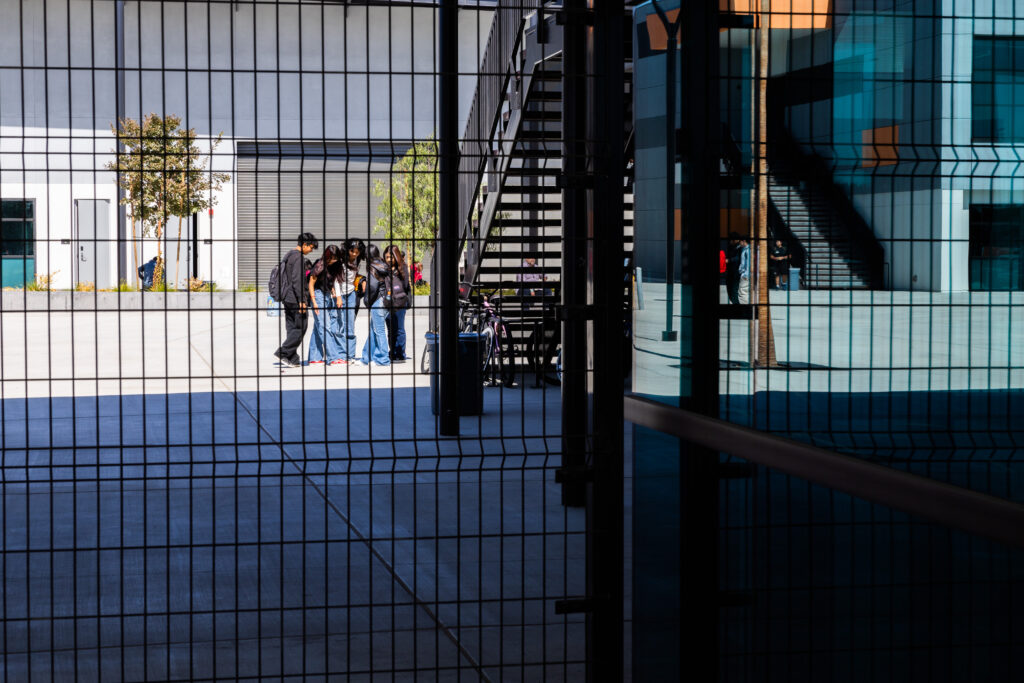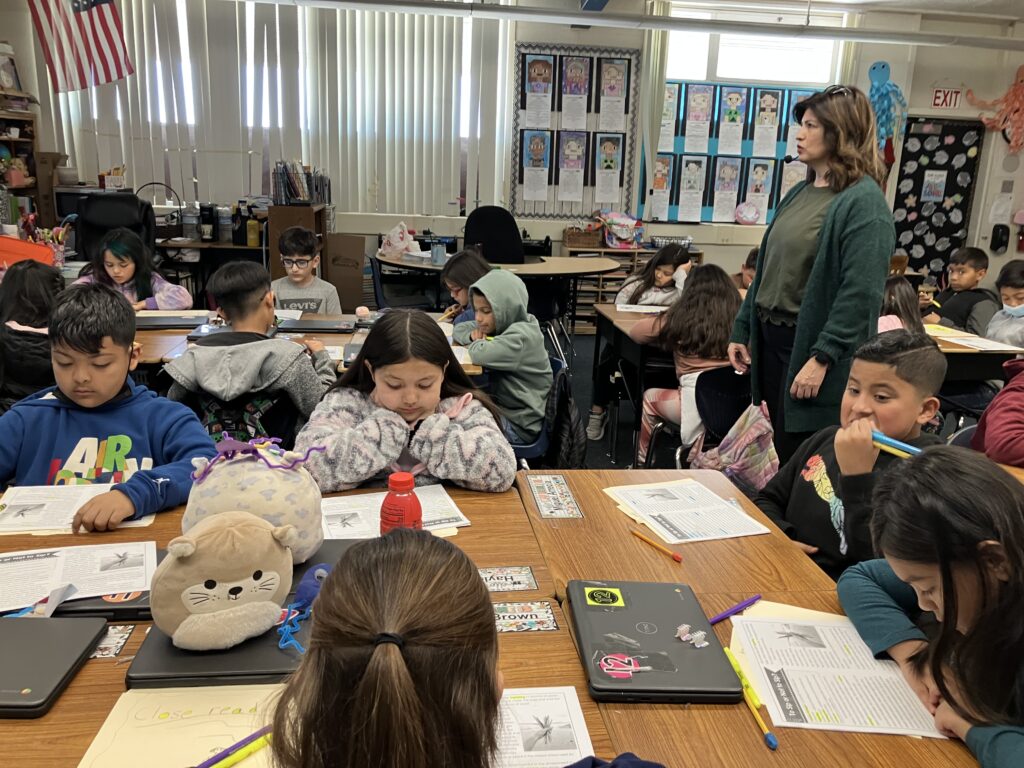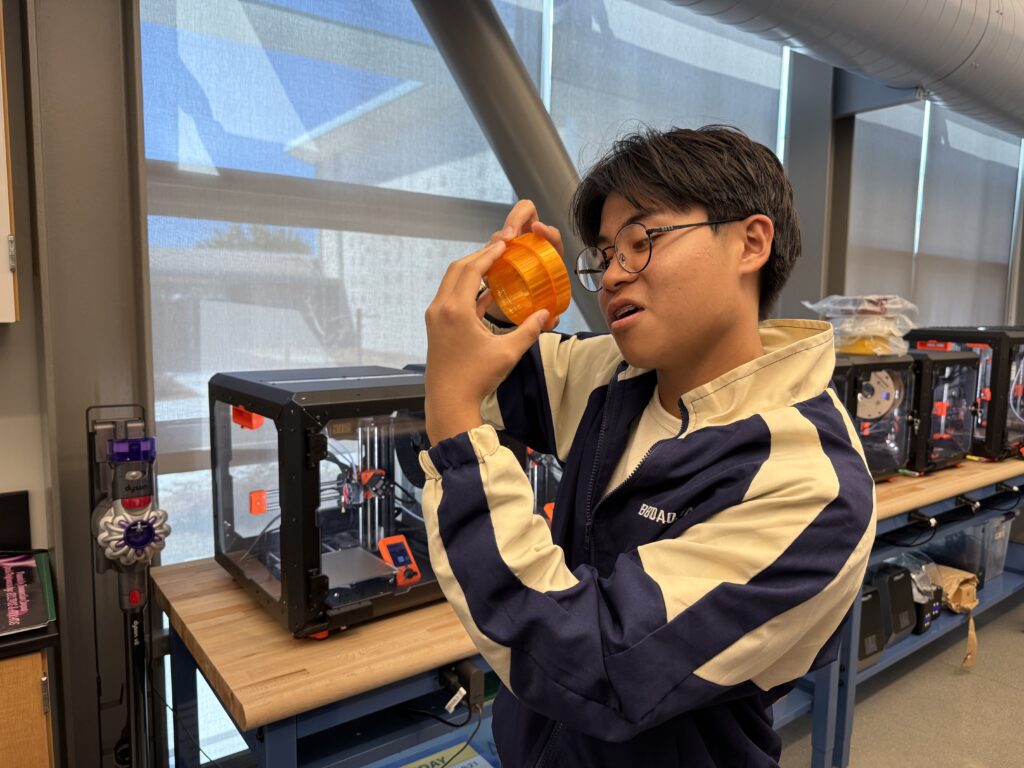
Students from Cal Poly San Luis Obispo’s Green Campus team promote the university’s graduation gown reuse program. Students who borrow regalia from the program can return it in bins after the ceremony or return it by mail.
. Cal Poly/Courtesy
As college students across the state prepare to graduate, they are sometimes surprised by the costs associated with this rite of passage.
Besides the cost of regalia, graduating at Cal Poly San Luis Obispo also requires a $120 commencement fee, charged for each Cal Poly degree or credential program. Students at California State University, Dominguez Hills, will pay a $90 graduation application fee.
The cost to apply to graduate at San Diego State University is $112, while students at California State University, Fullerton, pay $115.
CSU spokesperson Amy Bentley-Smith explained that each Cal State campus “sets its graduation fee. The fee covers the evaluation process to determine if the student has fulfilled the course requirements to earn a degree and graduate, as well as costs associated with the printing and mailing of the diploma.”
Added Bentley-Smith, “Portions of the fees can go to support putting on commencement, but it’s not the primary purpose of the fee.”
Beyond the fees, every student who wants to participate in the ceremony itself — commonly referred to as “walking” — is required to wear the campus’ approved regalia.
For example, at San Jose State University, where there is no graduation application fee, the SJSU university store sells its most basic regalia packs — cap, gown, degree-colored tassel, stole (also called a sash) and souvenir tassel — for $131.50.
The cost and one-time use for most students of this graduation attire — those with careers in academia often use regalia again — has spurred grassroots solutions to pop up across Cal State campuses.
With its simple all-black gown and cap requirement, CSU Dominguez Hills makes it easy for undergraduate students to opt out of purchasing their regalia from the student bookstore, with Amazon.com and third-party sellers a more popular option. It’s easy to find black caps and gowns online for $20.
Students also turn to Reddit and other social media platforms to find alumni and peers offering used caps and gowns at discounted prices or even for free.
“It just doesn’t make sense,” said Kenneth Lopez, a graduating senior majoring in business administration. “How is it that Amazon (is) selling it for cheaper and we’re getting maybe double or triple that (cost)?”
Lopez said that one way to defray these costs comes from the Latino Student Business Association, or LSBA, which is among several CSU Dominguez Hills organizations working to help students save money by partnering with local businesses such as Chick-fil-A, Panda Express and Shakey’s Pizza.
Lopez explained that the Latino Student Business Association, where he is the vice president of finance, reached out to local businesses all over Carson to set up fundraisers. The money, raised from a percentage of product sales, was put toward graduation stoles — a sash typically in the school’s colors with embroidery of the school’s name and year of graduation, costing about $50 — to give seniors a personal memento of their achievements.
Sonoma State University does not charge students a fee to graduate. The commencement gear, required for the ceremony, is sold through outside vendors, with a basic bachelor’s degree cap and gown set costing $95.
Aurelio Aguilar, a graduating senior at Sonoma State majoring in communications, found a more affordable alternative through the campus store: renting regalia. While it’s not well-advertised, he explained, he was able to rent the gear. “It came out to about $80 for the cap and gown, and the (tassel) they gave us for the top of the cap.”
At Cal Poly San Luis Obispo, one grassroots program aims to fight the problem head-on. The university’s Grad Gown Reuse program has gained in popularity, offering students a sustainable solution to the one-time-purchase model.
Started in 2022, the program allows students to donate their graduation gowns instead of having them hang in their closets collecting dust.
Carina Ballek is a senior environmental earth and soil science major at Cal Poly and is also an intern with the Green Campus team at Cal Poly. Ballek and her team worked with Cal Poly’s Educational Opportunity Program to kick-start the program, receiving a donation of 90 gowns.
“Our gowns are so popular that they are signed out in two days,” Ballek said, highlighting the need for more donations.
“There has been more demand than there is supply,” said Amy Unruh, a sustainability and waste specialist within Cal Poly’s energy utilities and sustainability department. She believes that getting the word out could help draw in more donations.
Since the program’s start, hundreds of students have benefited from reusing regalia. Logistically speaking, the Gown Reuse program sets up a table outside of commencement so graduates can easily drop off their gowns directly after the ceremony. Recent graduates can also drop off their gowns at the office of sustainability, or mail them in.
“It’s important because, on a sustainability level, we’re saving lots of gowns from going to landfills,” Ballek said. She also noted that “graduates don’t have their full-time jobs yet and would rather not spend $90-$100 on a gown.”
San Diego State University student Maren Hawkins, a journalism media studies major, estimated that regalia cost was “$135 or $145, and buying it (meant) not buy(ing) food for two weeks.”
Added Hawkins, “I’ve talked to other students about how … it’s unreasonable, the amount of money we have to put in to graduate.”
Instead, Hawkins turned to people whom she could rely on: alumni friends.
“I was embarrassed to ask my friends to borrow their (cap and gown),” Hawkins said. “We’d never talked about not being able to afford graduation. Now, I’m grateful that I’m not spending this money on it, because I know they’d sit in my closet for the rest of my life.”
The only item Hawkins purchased was her stole for $35.
Another San Diego State student, interdisciplinary studies major Lizeth Garcia, felt similarly. She and her housemate, Abigail Polack, found ways to avoid the costs.
Garcia and Polack worked at San Diego State’s Aztec Market since junior year, and both continued working there because students who work for Aztec Shops can apply to receive free regalia.
“Might as well keep working there so they can pay for my (regalia),” Garcia said. She said that free regalia was her primary reason for working, adding, “We already knew that we had to pay for graduation.”
At Cal State Fullerton, a program to help students with regalia costs comes from a partnership between Basic Needs Services and Titan Shops.
Created in 2022, Cal State Fullerton’s Academic Regalia Support provides regalia to students experiencing “recent unanticipated hardship,” according to Victoria Ajemian, director of Basic Needs Services..
The program offers 100 bachelor’s degree regalia sets that students register to reserve starting in April. Not all of the requests are filled due to high volume and limited supplies.
Business administration major Tiffany Lo’s friend, Azurine Chang, applied. “She barely got it last month,” Lo said.
Lo didn’t need the program herself — she’d gotten regalia from alumni. “There was no question when I asked,” Lo said. “They’re like, ‘Hey, you can have it — it’s collecting dust in my closet.’” Lo, who is saving money to study abroad, only purchased the CSUF stole.
Lo also directed friends to Facebook Marketplace, where she saw offers for regalia from past years for $35 — tassel and all.
“My friend didn’t buy the tassel for 2025,” Lo said. “She was like, ‘Hey, I’m gonna just use the 2024 tassel. No one’s gonna notice when we’re all gonna go walk.’”
Layla Bakhshandeh is a graduating senior at Cal Poly San Luis Obispo, majoring in journalism and graphic communication; Marc Duran is a graduating senior at Sonoma State University, majoring in communications; Stephinie Phan is a graduating senior at California State University, Dominguez Hills, majoring in journalism; and Joshua Silla is a graduating senior at San Diego State University, majoring in journalism and media studies. All are members of EdSource’s California Student Journalism Corps.







